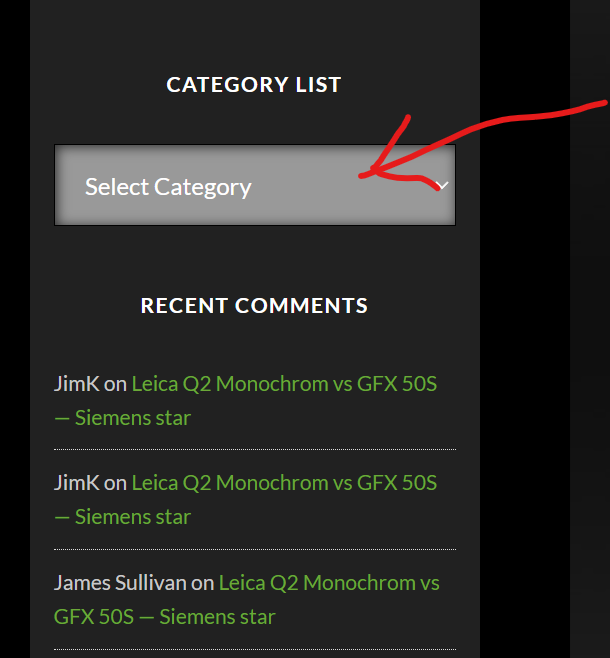This is the 16th post in a series about the Leica Q2 Monochrom. You can see all the other posts in the series by looking in the Category List drop-down menu on the right side of the page.
I’ve been breaking my pick trying to figure out what the heck Leica is doing with the ISO 100 setting on the Q2. I just had an epiphany. It doesn’t matter. I don’t fully understand it, but I do understand it well enough to say that it does not offer a material advantage over ISO 200, and there are a host of drawbacks. To be fair, the advantage is minor, but so are the drawbacks, as long as you’re careful to underexpose a bit compared to what you’d do at ISO 200.
The plus is that you can get up to a third of a stop more engineering dynamic range.
The minuses are:
- Histogram doesn’t indicate sensor clipping properly
- Overexposure EVF/LCD indicator is optimistically wrong. If you use it for exposure, you will experience clipping in your raw files.
- There’s a weird dual-saturation phenomenon that can occur sometimes, and there’s on odd kink in the saturation curve. It’s not clear that these, while reproducibly measurable, have a significant effect on normal photography.
I hate to do this, but I’m going to forgo further exploration of the nuances and peculiarities of the Q2 ISO 100 setting. I could find out more, but I doubt that would change my opinion about its utility.

Fred D. says
I haven’t read through your previous dissection of the phenomenon (in part because I’m not likely to ever buy a Leica, as I can’t justify the cost, especially for its lenses), so pardon my ignorance if you’ve addressed what I’m going to say, or if my reasoning is off-base for other reasons.
Is it possible that the sensor is a standard one intended for Bayer filtration, but that when going Monochrom, when there is no Bayer filter-produced attenuation, it’s not natively 100 ISO, that the wells/circuitry are therefore more subject to saturation when set to ISO 100, and that some of the curve wonkiness is either Leica trying to somehow electronically compensate, or some sort of response curve fold-over (A/D converter wonkiness)?
More interesting to me is whether lateral chromatic abberation is going to be a problem (significantly reducing resolution, and therefore the gains expected over a Bayer-filter camera used for B&W) with your average non-apo Leica lens, or adapted ones, as there is no way to digitally correct for C.A. in post when you don’t have differential color data registered by the sensor.
Srdjan says
The same issue is observable with Q2 and SL2 (the same sensor as Q2M, but with CFA). Q2’s strangeness occurs at ISO 50, while Q2M’s weirdness occurs at ISO 100 (lowest ISOs for both cameras).
Fred D. says
Oh, I have to correct my previous comment, I didn’t realize that the Q2 had a fixed lens, so any presumed potential C.A. problems from using random lenses will not occur, and Leica has hopefully designed the camera’s fixed lens to adequately minimize C.A.
Greg Johnson says
Jim, I’m not sure I’m following this well. I didn’t know the base for the Q2M was 100. Why is it different than the Q2?
I always shoot the Q2 at ISO 50 when I can, just as a matter of habit and training (base ISO). Are you saying I should shoot it at 100 even when I would otherwise have no need to bump ISO from 50 to 100 (like if I need a stop more speed or more DOF with a stop smaller aperture?
In other words, with the Q2, should I make 100 my new mental base ISO?
JimK says
You could make a case for defining the base exposure index for the Q2M as ISO 200. And I think that makes sense, considering the weirdness at ISO 100.
JimK says
I don’t know that it is.
JimK says
I think you should probably make 100 your mental base ISO on the Q2, but I don’t know for sure because I’ve not tested the Q2. When you get the Q2M, make ISO 200 your mental base for that camera.
Greg Johnson says
Thanks Jim. I’ll take that advice and make it so. I’m not sure I understand why, but I believe you. 200 is going to be my base ISO for the Q2M.